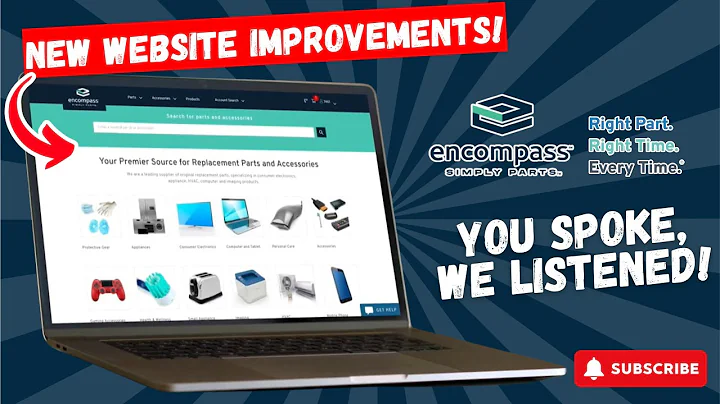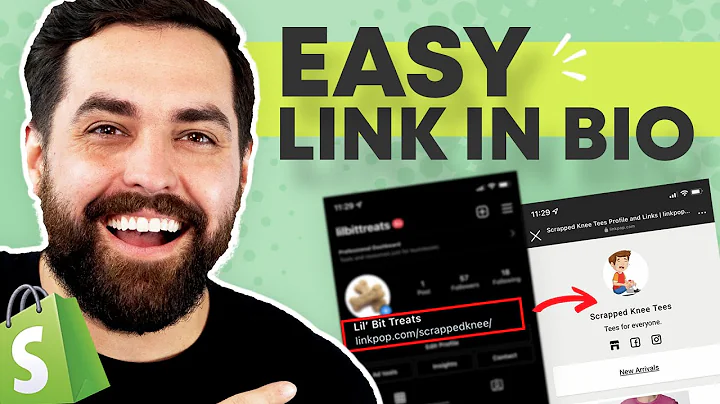Optimize Your Website for Mobile with These Tips
Table of Contents
- Introduction
- Tips for Mobile Optimization
- 2.1. Avoid Using Widths and Heights
- 2.2. Use Margins and Padding instead
- Controlling Content for Different Screen Sizes
- 3.1. Setting Specific Styles for Desktop
- 3.2. Using Display Settings for Mobile
- Previewing and Testing Mobile Responsiveness
- Conclusion
Tips and Tricks for Mobile Website Optimization
In today's digital age, it is essential for websites to be functional and visually appealing on both mobile and desktop devices. With a significant portion of web traffic coming from mobile users, optimizing your website for mobile is crucial for attracting and retaining visitors. In this article, we will explore some tips and tricks to ensure that your website looks good on mobile and desktop devices.
1. Avoid Using Widths and Heights
One common mistake when designing websites is setting specific widths and heights for elements. While this may seem like a simple solution to control the size of your content, it can lead to problems when viewed on different screen sizes. When you set fixed widths and heights, the content will not adjust properly, resulting in cut-off elements or distorted layouts.
Instead of using widths and heights, it is recommended to rely on margins and padding to control the size and spacing of your content. By using margins and padding, you allow the content to adapt and stretch accordingly based on the screen size. This ensures that your website will display correctly on various devices, from desktop to mobile.
2. Use Margins and Padding instead
Margins and padding are valuable tools for achieving a responsive and visually pleasing website design. When used strategically, they can create space and structure between elements, improving the overall user experience. By setting appropriate margins and padding, you can control the spacing between text, images, buttons, and other elements, ensuring that they are evenly distributed and visually appealing.
For example, instead of setting a fixed width for a button, consider adding margins or padding to create spacing around the button. This allows the button to remain flexible and adapt to different screen sizes without sacrificing its appearance. By utilizing margins and padding effectively, you can maintain a consistent design across various devices and ensure an optimal user experience.
3. Controlling Content for Different Screen Sizes
In some cases, you may need to customize the appearance of certain elements for specific screen sizes. For example, you might want to have a larger button on desktop devices and a smaller button on mobile devices. Fortunately, there are ways to achieve this without compromising the overall responsiveness of your website.
3.1. Setting Specific Styles for Desktop
If you have a specific design requirement for desktop devices, you can set custom styles using media queries. Media queries allow you to apply different styles based on the screen size. For instance, you can define a button's width and color specifically for desktop devices, ensuring that it looks exactly as intended on larger screens.
By using media queries, you can target specific screen sizes and tailor the design to meet your requirements. However, it is important to note that excessive customization for different screen sizes can lead to a more complex codebase and potentially affect performance. Strike a balance between customization and scalability to ensure a seamless user experience across devices.
3.2. Using Display Settings for Mobile
In cases where you want to hide certain content or elements on specific screen sizes, you can utilize display settings to control their visibility. This is particularly useful for mobile optimization, where you may want to hide certain elements that are not necessary or may not display well on smaller screens.
By using display settings, you can choose which content should be shown or hidden on different screen sizes. For example, you can hide a complex image carousel on mobile devices to optimize loading times and improve the overall user experience. This allows you to present tailored content to each screen size, ensuring an optimal browsing experience for your users.
4. Previewing and Testing Mobile Responsiveness
Once you have implemented responsive design techniques, it is crucial to preview and test your website's mobile responsiveness. Many website builders and development tools offer preview options that allow you to see how your website will look on different devices and screen sizes. Take advantage of these preview buttons to ensure that your website appears as intended on various devices.
By testing the mobile responsiveness of your website, you can identify any issues or areas for improvement. Make sure to view your website on different devices, such as smartphones and tablets, to simulate real-world usage. Pay close attention to the layout, spacing, and readability of your content to ensure a seamless and enjoyable user experience on all devices.
5. Conclusion
Optimizing your website for mobile devices is essential in today's digital landscape. By following the tips and tricks outlined in this article, you can ensure that your website looks good and functions well on both mobile and desktop devices. Avoid using fixed widths and heights, utilize margins and padding effectively, customize content for different screen sizes, and thoroughly test your website's mobile responsiveness. By prioritizing mobile optimization, you can engage your users, enhance their browsing experience, and drive success for your online presence.
Highlights
- Avoid using fixed widths and heights for elements on your website.
- Utilize margins and padding to control the size and spacing of your content.
- Customize the appearance of certain elements for different screen sizes using media queries.
- Use display settings to hide or show content based on specific screen sizes.
- Preview and test the mobile responsiveness of your website to ensure a seamless user experience.
FAQ
Q: Why should I avoid using fixed widths and heights for elements on my website?
A: Fixed widths and heights can cause elements to appear cut off or distorted on different screen sizes. By using margins and padding instead, you allow elements to adapt and adjust based on the device being used.
Q: How can I customize the appearance of elements for different screen sizes?
A: You can use media queries to apply different styles based on the screen size. This allows you to create a tailored design for desktop, tablet, and mobile devices.
Q: Can I hide certain content on specific screen sizes?
A: Yes, you can use display settings to control the visibility of content. This is particularly useful for optimizing the display of elements on smaller mobile screens.
Q: Why is it important to test mobile responsiveness?
A: Testing mobile responsiveness ensures that your website appears as intended on different devices and screen sizes. It allows you to identify any issues or areas for improvement, resulting in a better user experience.






















